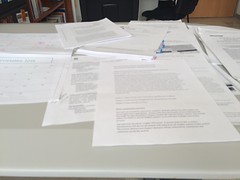 I remember when I was doing my PhD I wanted to Read All The Things. This was particularly true during my very first year, when I started preparing for my comprehensive exams. I was (and in many ways, still am) a walking, living and breathing literature review. I love reading, and since I was lucky enough to have my parents send me to one of those courses for speed reading (they do work, trust me) when I was a little child, I read at a very fast speed. This ability to speed read enables me to survey a broad range of literatures without having to worry too much about the time I spend reading. I am well aware that for people who do not read fast, this is a huge problem. And sadly, a problem I don’t have the answer for.
I remember when I was doing my PhD I wanted to Read All The Things. This was particularly true during my very first year, when I started preparing for my comprehensive exams. I was (and in many ways, still am) a walking, living and breathing literature review. I love reading, and since I was lucky enough to have my parents send me to one of those courses for speed reading (they do work, trust me) when I was a little child, I read at a very fast speed. This ability to speed read enables me to survey a broad range of literatures without having to worry too much about the time I spend reading. I am well aware that for people who do not read fast, this is a huge problem. And sadly, a problem I don’t have the answer for.
In the past few weeks, I’ve been sharing my own workflow in hopes that it may help graduate students, early career scholars and maybe even some senior professors. I’ve written about how I now focus on one task at a time, how I budget my time to accomplish what I set out to do in a particular day or week, and how I break down the work in accomplishable tasks. I know I have my own quirks and these processes work for me, and may not work for everyone. I’m aware of the privilege I have by having time to actually read. But what I thought I’d share in this post is a little bit of truth that many people may not be aware of. The truth is that I read, summarize and write memos about articles, books and book chapters in a strategic way. I don’t engage deeply with All The Things. Since I work on several projects at the same time, I often need to jump from one body of works to another. This makes my life complicated because I don’t simply engage in a reading spree for one particular topic, but usually cover several areas of research. For example, just this week, I’m reading about:
- Ethically-branded bottled water
- Field experiments in various fields – public management, political science, strategic management
- The human right to water and sanitation
- The ethics of fieldwork in vulnerable communities
- Implementation theory in public policy research
- Event history analysis for political science
- Sanitation (both water and waste), the most recent scholarship in the field.
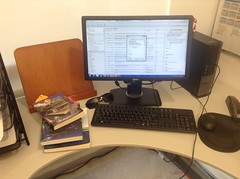 I have decided (since a pretty long while ago) that even if I speed-read every single article, I can only engage, summarize, highlight and read in-depth a few chosen ones. Yes, I integrate reading into my workflow, but I don’t have unlimited time to read (I wish I did, though!) Note that I do read every article, though many people who write about academic writing may recommend what many call “skimming” (e.g. reading the article’s abstract, conclusions, and selected parts of the paper). But you can also skim without any problem.
I have decided (since a pretty long while ago) that even if I speed-read every single article, I can only engage, summarize, highlight and read in-depth a few chosen ones. Yes, I integrate reading into my workflow, but I don’t have unlimited time to read (I wish I did, though!) Note that I do read every article, though many people who write about academic writing may recommend what many call “skimming” (e.g. reading the article’s abstract, conclusions, and selected parts of the paper). But you can also skim without any problem.
The way I choose which articles I highlight, write on the margins and deeply engage with (including writing a memorandum about it) is simple, I choose a piece for this in-depth process…
- if the article is written in an easy-to-read manner
- if the article contains a lot of rich theoretical or empirical analysis
- if the article is a necessary piece of an argument (or a specific method)
- if the article resonates with my own research or challenges it in a serious manner
- if the article poses an interesting puzzle
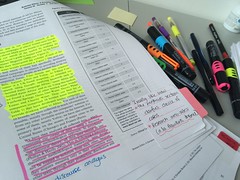 For example, I downloaded about 6 pieces on bottled water today. Two of them were spectacularly well written, and one was pretty dense (governmentality and biopolitics kind of stuff), but it had important insights. I read all the articles, but engaged deeply with only three of them, which I chose on the basis of whether I could get a rich, dense, descriptive memorandum out of engaging with the articles. So I wrote analytical memos out of three articles, even though I speed-read 6.
For example, I downloaded about 6 pieces on bottled water today. Two of them were spectacularly well written, and one was pretty dense (governmentality and biopolitics kind of stuff), but it had important insights. I read all the articles, but engaged deeply with only three of them, which I chose on the basis of whether I could get a rich, dense, descriptive memorandum out of engaging with the articles. So I wrote analytical memos out of three articles, even though I speed-read 6.
Also, when I budget time to read, I make sure I leave the most important articles for when I feel fresh instead of when I am exhausted. For example: I am presenting a research design for a field experiment on bottled water in a few weeks, at a conference. I need to read about field experiments to prepare for the presentation. So I downloaded two pieces on field experiments (both in public policy), and I left them aside to read and write tomorrow (Thursday). I was already a bit tired from reading all day today (Wednesday) and therefore, I knew I wouldn’t be able to engage deeply with those.
Finally, when I summarize the literature, I process manuscripts, papers, books, book chapters and articles, all in one sitting. That is, I make sure to do everything that is associated with one specific task at the same time. So, for example, when I download an article, I upload it to my Mendeley database, clean the reference, print the article out, add the plastic label, staple the article, read, highlight, write notes, type the memo, upload it to my Evernote. So, basically – I process one article at a time, all the way through, instead of leaving all the uploading of PDFs on to Mendeley to when I’m bored, etc.
Hopefully my decision-making process for strategically reading makes sense to my readers! It certainly does for me 🙂
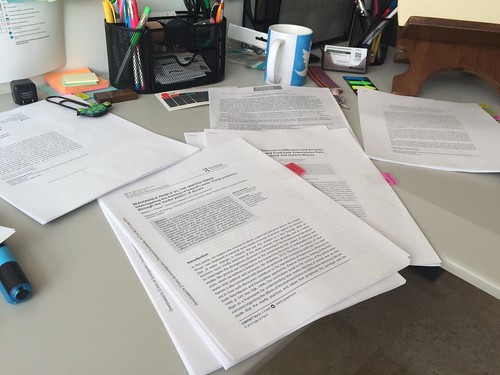
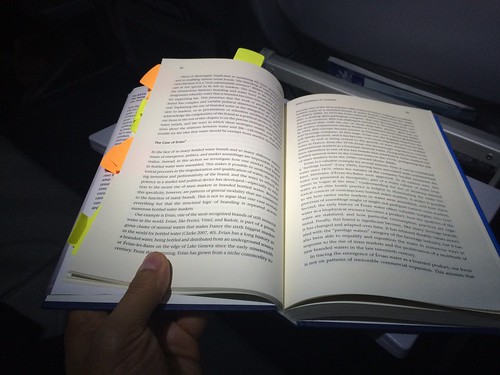

0 Responses
Stay in touch with the conversation, subscribe to the RSS feed for comments on this post.